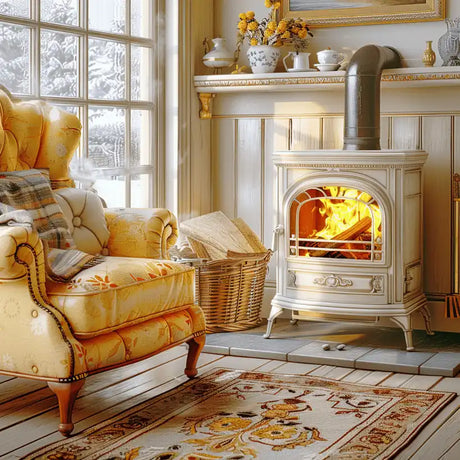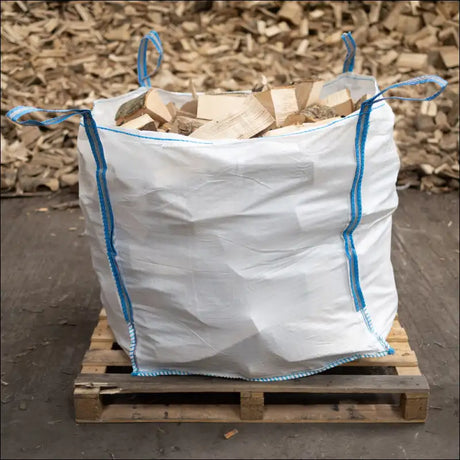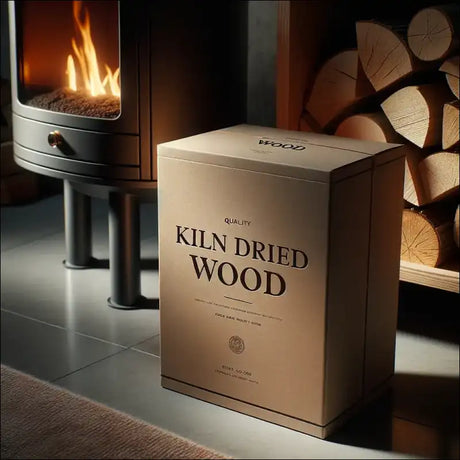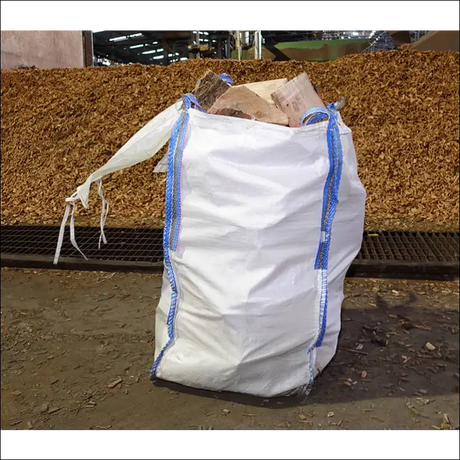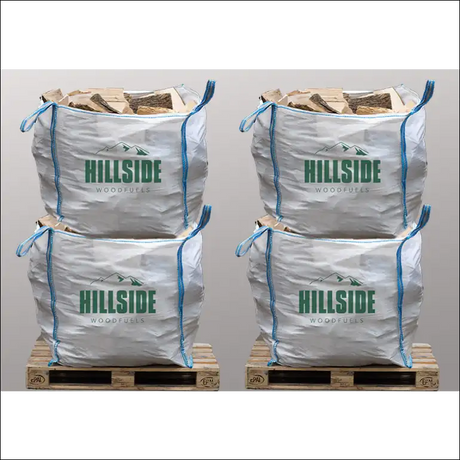A question that often arises among firewood enthusiasts, outdoor lovers, and the ever-curious homesteader alike is: "Should kiln dried wood have moss on it?" It's a query that, at first glance, might seem as strange as asking whether you should butter your bread with a hammer. However, there's more to this topic than meets the eye.
The Mossy Misunderstanding
Moss on wood, particularly firewood, is typically not a desired feature, and it's certainly not something you would expect to see on kiln-dried wood. But why is that? Isn't moss just a harmless, green plant that adds a touch of rustic charm to our wood piles?
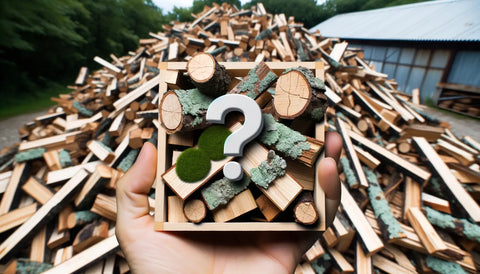
Well, yes and no. Moss itself isn't harmful to wood. If anything, it's the conditions that encourage moss growth that are the real concern. Moss thrives in damp, shaded areas and is often indicative of excess moisture. And, as any seasoned firewood aficionado will tell you, moisture is the natural enemy of a good burn. There's a reason why you don't fry chips in water, and the same principle applies to firewood.
To understand why moss on kiln-dried wood is a bit of a no-no, we must first understand what kiln drying entails.
The Art of Kiln Drying
Kiln-drying is a process where wood is placed in a kiln (a type of industrial oven), and heated to remove moisture. This procedure is designed to get the moisture content of the wood down to a level that's ideal for burning, generally less than 20%. For more insights on this, you might want to read up on the advantages of kiln-dried wood.
This drying method has numerous benefits. Kiln-dried wood is less likely to warp, crack or shrink, and it's free from pests and fungi, a feature which makes it healthier to use. It also burns cleaner, hotter, and longer than its non-kiln-dried counterparts.
So, when you purchase kiln-dried wood, you're investing in a product that's been carefully treated to provide the best possible burn. It's like buying a new car and expecting it to come with a full tank of petrol. Therefore, the presence of moss, a sign of dampness and neglect, would be about as welcome as a flat tyre.
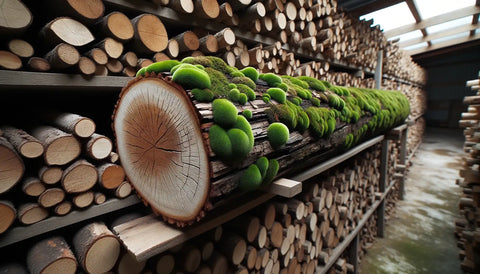
A Mossy Surprise on Your Kiln Dried Wood
If you've discovered moss on your kiln-dried wood, don't panic just yet. It doesn't necessarily mean that your wood is ruined or that your supplier has done a shoddy job. Remember, moss can grow on the surface of wood without penetrating it. And, if the wood has been stored outside, in damp conditions, it's possible for moss to take hold.
The key question is: has the moss affected the quality of the burn? To find out, check the moisture content. If it's still within the acceptable range (below 20%), you're in the clear. You might also want to read about what happens if firewood gets rained on for more information on how moisture affects firewood.
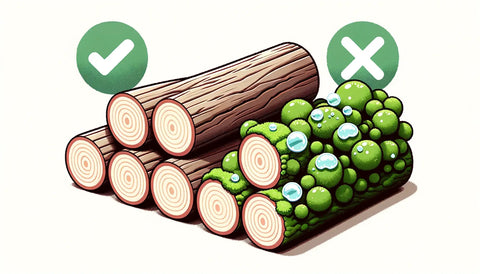
Prevention is Better Than Cure
While moss on kiln-dried wood isn't the end of the world, it's best to avoid it if possible. Here are some tips:
- Store your wood in a dry, well-ventilated area.
- Keep wood off the ground by stacking it on pallets or in a log store.
- Cover the top of the woodpile to protect it from rain, but leave the sides open to allow for air circulation.
In Conclusion
So, should kiln-dried wood have moss on it? In a word, no. Moss on kiln-dried wood is a sign that the wood has been exposed to damp conditions, which is not ideal for maintaining its dryness and quality. However, if you've got a mossy situation on your hands, all is not lost. Check the moisture content and, if it's still below 20%, you can enjoy a cosy fire without further ado. But remember, when it comes to storing your firewood, think like a bat - keep it dry and airy, but out of direct sunlight!


